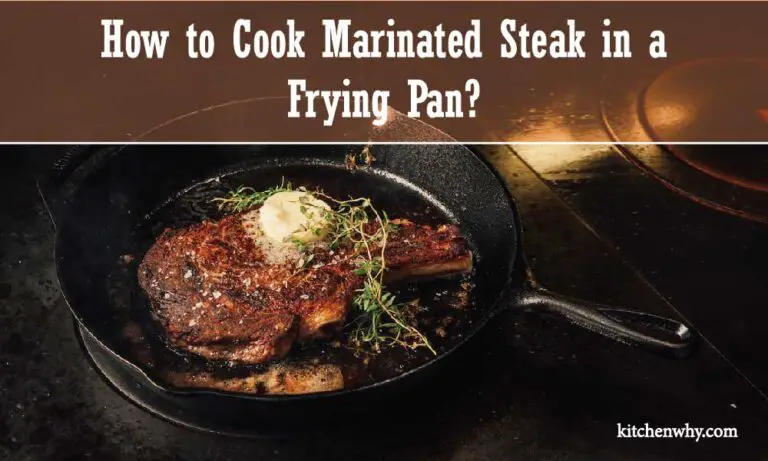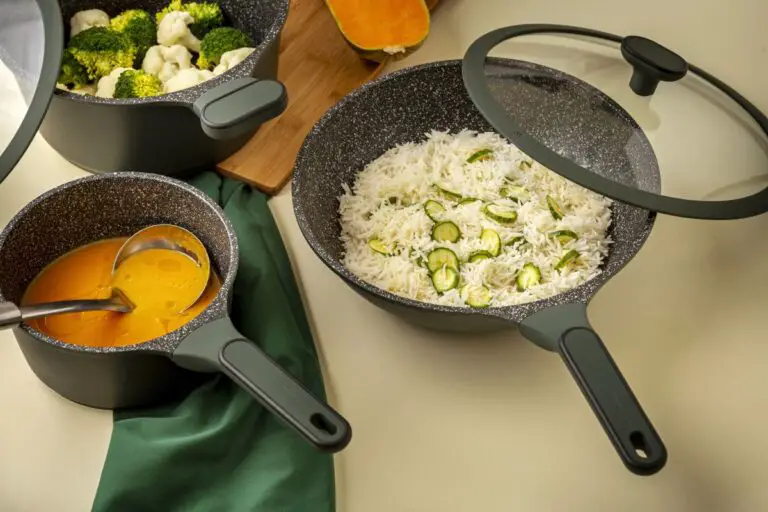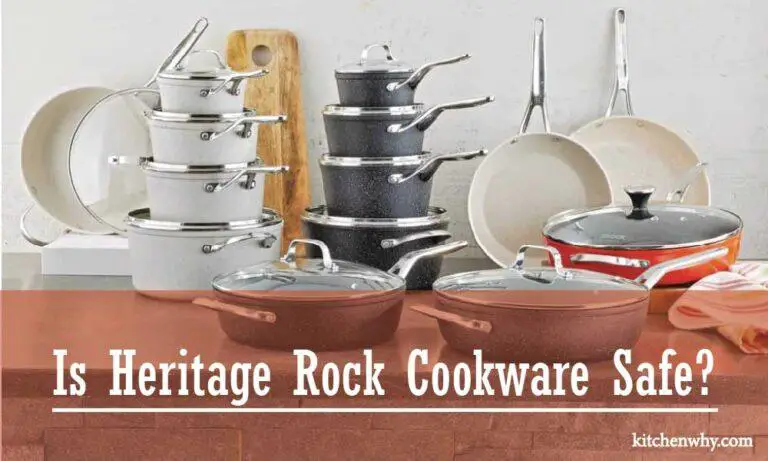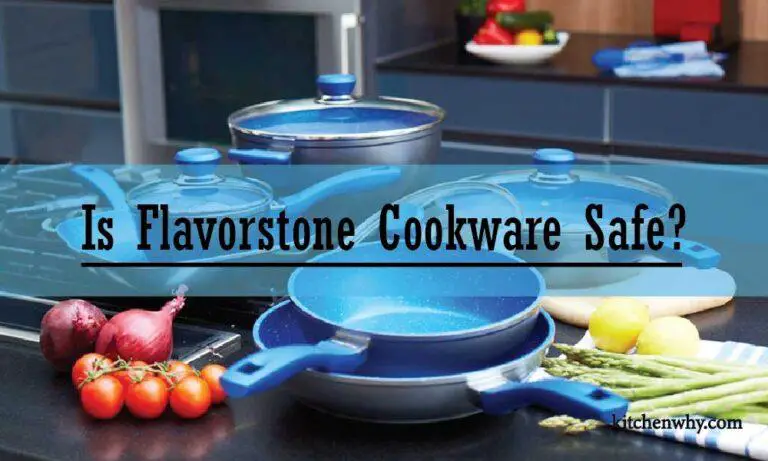How to Measure a Frying Pan Size: A Comprehensive Guide
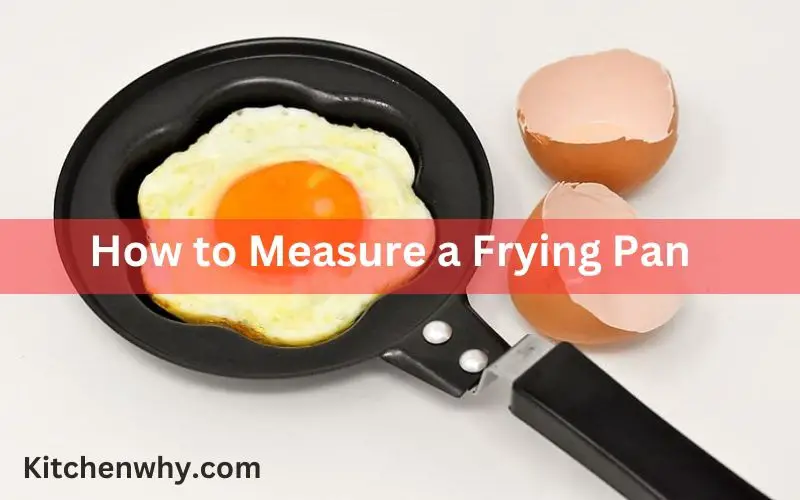
When it comes to cooking, using the right tools and equipment is essential. Among the most frequently used kitchen essentials is the frying pan. However, have you ever wondered how to measure a frying pan?
Knowing the dimensions of your frying pan is crucial for recipe accuracy and ensuring optimal cooking results. In this comprehensive guide, we will take you through the step-by-step process of how to measure a frying pan, discuss common pan sizes, provide tips on choosing the right size, and offer maintenance suggestions to keep your frying pans in top shape.
Understanding the Different Types of Frying Pans
Before we dive into measuring a frying pan, it’s essential to understand the different types of frying pans available in the market. Here are the four most common types of frying pans:
- Nonstick frying pans: These frying pans are coated with a non-stick surface that prevents food from sticking to the pan. They are ideal for cooking delicate foods like fish and eggs.
- Stainless steel frying pans: These frying pans are made of stainless steel and are known for their durability and heat retention. They are perfect for searing and browning meats.
- Cast iron frying pans: These frying pans are made of cast iron and are known for their excellent heat retention and even cooking surface. They are perfect for cooking chicken breasts and thighs.
- Copper frying pans: These frying pans are made of copper and are known for their excellent heat conductivity. They are perfect for cooking dishes that require precise temperature control, like sauces and soups.
Measuring the Size and Capacity of a Frying Pan
Measuring a frying pan is essential to ensure that you are using the right size and capacity for your cooking needs. Here are the three most common ways to measure a frying pan:
- Diameter measurement: Measure the distance across the top of the frying pan from one edge to the other.
- Volume measurement: Fill the frying pan with water and measure the amount of water it can hold.
- Weight measurement: Weigh the frying pan on a kitchen scale.
Tips and Tricks for Measuring a Frying Pan
Here are some practical tips and tricks to help you measure a frying pan accurately:
- Use a ruler or tape measure: Use a ruler or tape measure to measure the diameter of the frying pan accurately.
- Consider the shape of the frying pan: Take into account the shape of the frying pan, whether it’s round, square, or rectangular.
- Take into account the depth of the frying pan: The depth of the frying pan is also essential to consider, especially when cooking dishes that require a lot of liquid.
- Check the manufacturer’s specifications: Check the manufacturer’s specifications to ensure that you are using the right size and capacity for your cooking needs.
Step By Step Process of How to Measure a Frying Pan Size?
Measuring the size of a frying pan is a simple process that requires a few basic tools. By determining the dimensions of your frying pan, you can choose the right size for recipes, understand its cooking capacity, and ensure optimal cooking results.
Here’s a step-by-step guide on how to measure a frying pan size:
Tools you’ll need:
- Measuring tape or ruler
- Alternative methods: string or flexible measuring tape (optional)
Step 1: Clear the cooking surface Before measuring your frying pan, ensure that the cooking surface is clear of any food remnants or debris. This will allow you to get accurate measurements without any obstructions.
Step 2: Measure the diameter The diameter of the frying pan refers to the distance across the widest part of the cooking surface. To measure the diameter:
For round frying pans:
- Place the measuring tape or ruler across the center of the pan, from one side to the other, passing through the center point.
- Read the measurement where the tape or ruler crosses the edge of the pan.
- Note down the measurement.
For square or rectangular frying pans:
- Measure one side of the pan from end to end.
- Measure the adjacent side of the pan from end to end.
- Note down both measurements.
Step 3: Measure the height or depth The height or depth of the frying pan refers to the distance from the cooking surface to the top edge of the pan. To measure the height:
- Place the measuring tape or ruler vertically inside the pan, resting it against the cooking surface.
- Read the measurement at the top edge of the pan.
- Note down the measurement.
Alternative methods: If you don’t have a measuring tape or ruler, you can use alternative methods to measure the frying pan’s size:
- String method: Take a piece of string and wrap it around the circumference of the frying pan. Mark the point where the string overlaps and measure the length with a ruler or measuring tape.
- Flexible measuring tape: Use a flexible measuring tape that can bend and conform to the shape of the pan. Wrap the measuring tape around the circumference of the frying pan and read the measurement.
Understanding the measurements: Once you have measured the diameter and height of the frying pan, you can use these measurements to determine the pan’s size and capacity. The diameter will help you understand the appropriate size for recipes, while the height will give you an idea of the pan’s capacity for different cooking tasks.
By following these simple steps and using the appropriate tools, you can accurately measure the size of your frying pan. This knowledge will empower you to make informed decisions when cooking and ensure that your recipes turn out perfectly every time.
Common Frying Pan Sizes and Their Uses
Frying pans come in a range of sizes, each with its own purpose and advantages. Understanding the different sizes and their uses will help you choose the right frying pan for your cooking needs.
Small frying pans typically range from 6 to 8 inches in diameter. These compact pans are perfect for cooking single servings, such as frying an egg or sautéing a small portion of vegetables. Their small size also makes them ideal for tasks that require precise heat control, like melting butter or making sauces.
Medium-sized frying pans, ranging from 10 to 12 inches in diameter, are the workhorses of the kitchen. These versatile pans can handle a variety of cooking tasks, including frying, sautéing, searing, and stir-frying. They are suitable for cooking multiple servings, making them a popular choice for families or individuals who enjoy entertaining guests.
Large frying pans, with diameters of 14 to 16 inches, are designed for cooking large quantities of food. These spacious pans are excellent for preparing meals for a crowd, such as family gatherings or dinner parties. Their generous size allows for even heat distribution and ample room for flipping and tossing ingredients, making them ideal for stir-fries, deep frying, and cooking dishes that require substantial space.
Which Frying Pan Size Is Best For Me?
Choosing the best frying pan size depends on your specific cooking needs, the number of servings you typically prepare, and your available kitchen space. Here are some factors to consider when determining the frying pan size that is best for you:
1. Individual or Small Servings: If you primarily cook for yourself or prepare small portions, a smaller frying pan is suitable. Sizes ranging from 6 to 8 inches in diameter are ideal for frying an egg, sautéing a small amount of vegetables, or cooking a single serving of protein. These smaller pans are also useful for tasks that require precise heat control, such as melting butter or making sauces.
2. Family or Moderate Servings: For everyday cooking or when preparing meals for a small family, a medium-sized frying pan is recommended. Frying pans with diameters of 10 to 12 inches are versatile and can handle a variety of cooking tasks. They are suitable for frying, searing, stir-frying, and cooking multiple servings. Medium-sized pans offer a balance between cooking capacity and manageable size, making them popular choices for daily meal preparation.
3. Large Gatherings or Entertaining: If you frequently entertain guests or cook for larger groups, a larger frying pan will be more suitable. Sizes ranging from 14 to 16 inches in diameter are designed for cooking substantial quantities of food. These spacious pans provide ample room for flipping and tossing ingredients, making them ideal for stir-frying, deep frying, and preparing dishes that require a significant cooking area. Large frying pans ensure even heat distribution and can accommodate meals for a crowd.
4. Storage and Kitchen Space: Consider the storage and kitchen space you have available. If you have limited cabinet space or a small kitchen, choosing a frying pan size that fits comfortably within your storage area and cooking area is crucial. Opt for a size that suits your available space without compromising functionality. Additionally, if you have a compact stovetop, ensure the frying pan fits well on the burners without overcrowding or compromising heat distribution.
5. Versatility: If you prefer a versatile frying pan that can handle various cooking tasks, opt for a medium-sized pan (10 to 12 inches). These pans can accommodate a range of recipes and serve different purposes, making them a convenient choice for most home cooks. Look for pans with straight sides, as they provide more cooking surface area and allow for easier flipping and stirring of ingredients.
6. Specialty Pans: Consider if you have specific cooking needs that may require specialty frying pans. For example, omelette pans, sauté pans, or pans with unique shapes designed for specific dishes. These specialty pans may serve specific purposes and can be great additions to your cookware collection if you frequently prepare specific recipes.
Remember that the size of the frying pan is just one factor to consider. Other factors such as handle length, weight, material, and overall quality should also be taken into account when choosing a frying pan that suits your cooking style and preferences.
By considering these factors, you can determine the frying pan size that best suits your needs and enhances your cooking experience.
Maintenance Tips for Frying Pans
Proper maintenance of your frying pans will extend their lifespan and ensure optimal cooking performance. Here are some essential tips for maintaining your frying pans:
Cleaning and storage guidelines: Follow the manufacturer’s instructions for cleaning your specific pan type. In general, hand-washing with mild detergent and warm water is recommended for most frying pans. Avoid using abrasive sponges or harsh cleaning agents, as they can damage the surface. After cleaning, ensure the pan is completely dry before storing to prevent moisture-related issues like rust.
Avoiding scratches and damage: Protect the surface of your frying pans by using non-metal utensils, such as wooden or silicone spatulas, to prevent scratches. Avoid stacking pans directly on top of each other to prevent scratches and dents. If you need to stack your pans due to limited space, place a protective layer, such as a cloth or silicone mat, between them.
Seasoning and maintaining non-stick pans: Non-stick frying pans require special care to maintain their coating. Seasoning the pan periodically with a thin layer of cooking oil can help preserve the non-stick properties. Additionally, avoid using metal utensils or abrasive cleaning tools on non-stick surfaces, as they can damage the coating.!
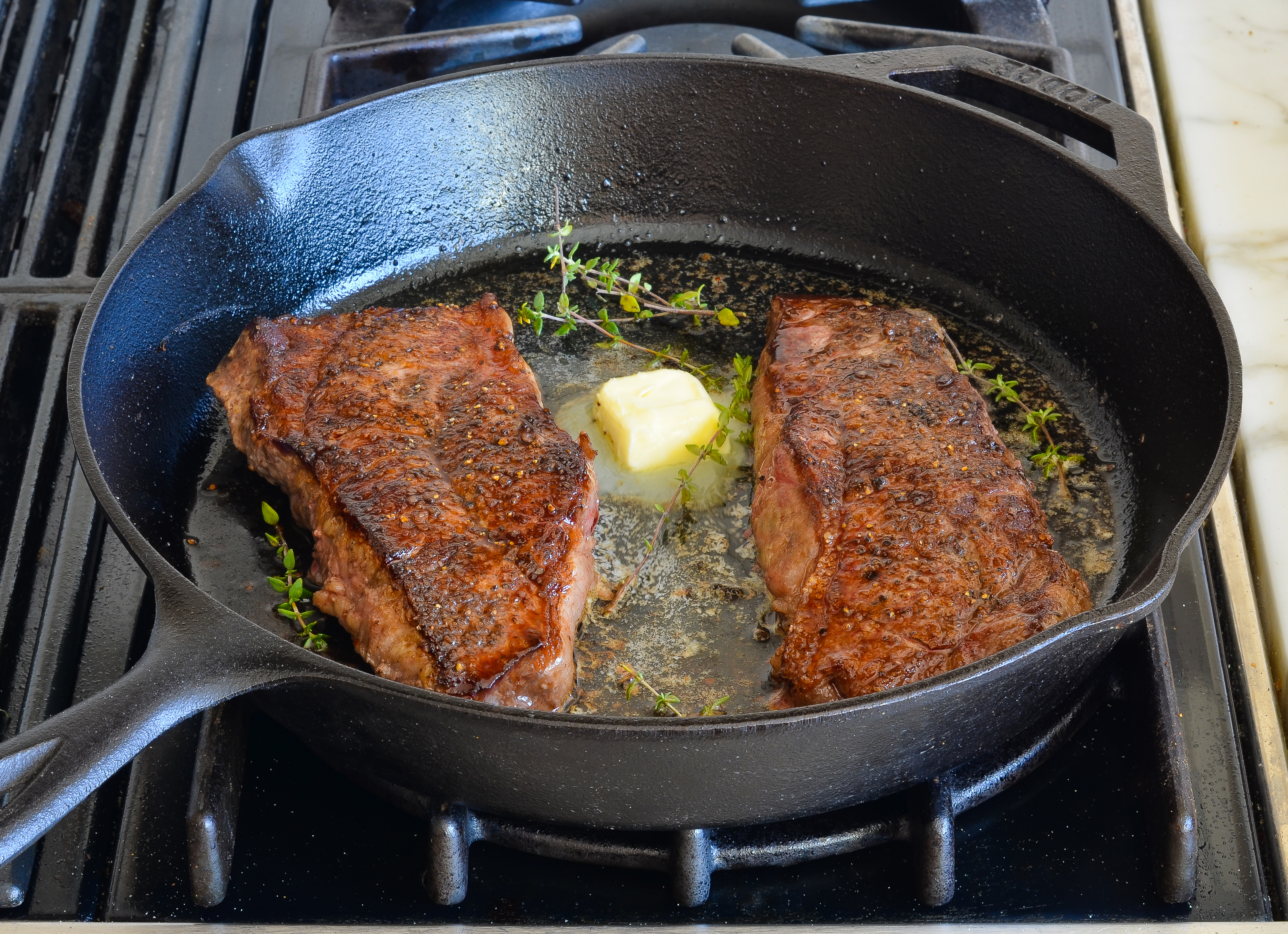
Credit: www.onceuponachef.com
Why Accurate Measurements Matter In Cooking
Importance Of Accurate Measurements In Cooking
Cooking is a delicate art that requires precision and attention to detail. Every ingredient and measurement plays a crucial role in the final result of a dish. When it comes to measuring ingredients, accuracy is key. A slight variation in the amount of an ingredient can alter the taste, texture, and overall outcome of a recipe.
Understanding the importance of accurate measurements in cooking can help you elevate your culinary skills to new heights. In this section, we’ll explore the significance of precise measurements and how they impact cooking results.
How Measuring Ingredients Affects Cooking Results
Precise measurements in cooking have a significant impact on the final outcome of a dish. Let’s delve into how measuring ingredients affects cooking results:
- Consistency: Accurate measurements ensure that you consistently achieve desired results each time you recreate a recipe. This is particularly important when it comes to baking, where even the smallest variations can result in a completely different texture or rise.
- Flavor balance: Cooking is all about balancing flavors. Accurate measurements of ingredients such as spices, seasonings, and liquids help maintain the perfect balance of flavors, ensuring a harmonious taste profile in your dishes.
- Texture: Whether you’re baking a cake or sautéing vegetables, precise measurements of ingredients like flour or oil can significantly impact the texture of your final dish. Too much or too little of these ingredients can result in a dense cake or greasy vegetables.
- Chemical reactions: In certain recipes, precise measurements are crucial to activate chemical reactions. For instance, when baking, the precise amount of baking powder or baking soda is necessary to create the desired rise and texture.
- Cooking time: Measuring ingredients accurately also affects cooking time. If you add too much or too little of a certain ingredient, it can impact the cooking time, resulting in undercooked or overcooked food.
- Conserving ingredients: Precise measurements help prevent unnecessary waste of ingredients. When you measure accurately, you only use the necessary amounts, reducing the chances of leftovers or excess ingredients.
By understanding how measuring ingredients affects cooking results, you can ensure consistent, flavorful, and perfectly executed dishes every time you step into the kitchen. So, grab your measuring cups and spoons, and let precision become your secret ingredient to culinary success.
What You’ll Need To Measure Your Frying Pan
Essential Tools For Measuring A Frying Pan
If you’re a cooking enthusiast or simply someone who loves spending time in the kitchen, having the right tools is essential. When it comes to measuring your frying pan, there are a few tools that you’ll want to have on hand to ensure accuracy.
Whether you’re replacing an old pan or buying a new one, being able to measure the diameter and depth is crucial. By knowing the correct size, you can make sure that your recipes turn out just right. So, what tools do you need to measure your frying pan?
Let’s take a closer look.
Choosing The Right Measuring Tools:
- Tape measure: This tool is useful for measuring the diameter of your frying pan. Simply extend the tape measure across the center of the pan, from one side to the other, and take note of the measurement.
- Ruler: A ruler is another great tool for measuring both the diameter and depth of your frying pan. Place the ruler from one edge of the pan to the opposite side to determine the diameter. For depth measurement, position the ruler at the bottom of the pan and extend it upwards until it reaches the rim.
- Kitchen scale: While not necessary for measuring pan dimensions, a kitchen scale can come in handy when it comes to measuring the weight of your frying pan. This is especially useful if you’re looking to replace your pan and want to find one with a similar weight.
- Cooking app or website: Alternatively, you can use a cooking app or website that provides information about the dimensions of popular frying pan brands. This can save you time and effort in measuring and provide you with accurate information to make an informed decision.
Having the right tools to measure your frying pan is essential when it comes to buying a new one or ensuring your recipes will fit perfectly. With a tape measure, ruler, kitchen scale, or the assistance of a cooking app or website, you’ll have no trouble determining the diameter, depth, and weight of your frying pan.
Measuring The Diameter Of Your Frying Pan
Methods For Accurately Measuring The Pan’S Diameter
If you want to get precise measurements for your frying pan, it’s essential to accurately measure its diameter. This will help you determine the right size for your recipes, ensure even cooking, and avoid any surprises in the kitchen. Here are a few methods you can use to measure your frying pan’s diameter:
- Method 1: Using a measuring tape
: grab a measuring tape and place it across the widest part of the pan, from one edge to the other. Make sure the measuring tape is straight and snug against the pan’s edges. Take note of the measurement in inches or centimeters.
- Method 2: Using a ruler or caliper
: if you don’t have a measuring tape, a ruler or caliper can do the trick. Place the ruler or caliper on the pan’s inner or outer edge and measure from one side to the opposite side. Be sure to get an accurate measurement by aligning the ruler properly.
- Method 3: Calculating from the circumference
: if you only have access to a string or a piece of flexible material, you can measure the frying pan’s circumference. Wrap the string around the widest part of the pan, mark where it overlaps, and then measure the length using a straight ruler.
Divide the measured circumference by pi (approximately 3. 14) to calculate the diameter.
Importance Of Measuring The Pan’S Diameter
Knowing the diameter of your frying pan is crucial for several reasons. By measuring the pan’s diameter accurately, you can:
- Cook recipes with precision
: the diameter of the pan affects the cooking time and heat distribution. By using the right-sized pan, you can ensure your recipes cook evenly and thoroughly. This is particularly important for dishes that need exact cooking times and temperatures.
- Adjust ingredient quantities
: recipes often specify the pan size to provide the desired result. By measuring your pan’s diameter, you can determine if you need to adjust ingredient quantities or find a suitable alternative pan size to achieve the recipe’s intended outcome.
- Prevent overcrowding or underutilizing
: cooking ingredients in a pan that’s too small can lead to overcrowding, resulting in uneven cooking and potential food waste. On the other hand, using a pan that’s too large for the amount of ingredients may result in inefficient heat distribution.
Measuring the diameter helps you choose the right-sized pan for the job.
- Select the right accessories
: knowing your pan’s diameter is crucial when purchasing accessories such as lids or splatter guards. You’ll be able to find accessories that fit perfectly and complement your culinary efforts, enhancing your cooking experience.
Accurate measurements of your frying pan’s diameter ensure that your cooking experience is efficient, effective, and enjoyable. So, grab your measuring tape or ruler and get measuring!
Measuring The Depth Of Your Frying Pan
Techniques For Measuring The Depth Of Your Frying Pan
When it comes to cooking, having the right tools is essential, and that includes knowing the dimensions of your frying pan. The depth of the pan plays a significant role in how your food cooks, affecting the heat distribution, cooking time, and even the amount of oil or sauce you can use.
To ensure you’re using the best pan for the job, it’s important to accurately measure its depth. Here are a few techniques you can use:
- Use a ruler: One of the easiest ways to measure the depth of your frying pan is by using a ruler. Simply place one end of the ruler at the base of the pan and extend it vertically until it reaches the rim. Read the measurement on the ruler to determine the depth.
- Fill the pan with water: Another method is to fill the pan with water, making sure not to overflow it. Measure the amount of water you poured into the pan, then carefully pour it out and measure it again. The difference between the two measurements will give you the depth of the pan.
- Visual estimation: If you don’t have a ruler or a measuring cup handy, you can make an educated guess by visually estimating the depth of the pan. Compare it to other objects with known measurements, such as a can of soup or a standard-size loaf of bread, to get a rough idea of the depth.
Why The Depth Of The Pan Matters In Cooking
The depth of your frying pan might seem like a minor detail, but it can actually make a big difference in your cooking. Here’s why:
- Heat distribution: A deeper pan allows for better heat distribution, ensuring that your food cooks evenly. The increased surface area also helps prevent overcrowding, which can lead to uneven cooking and a lack of browning.
- Cooking time: The depth of the pan affects the cooking time of your food. A deeper pan can hold more ingredients, allowing for larger batches and reducing the need for multiple rounds of cooking.
- Oil and sauce capacity: The depth of the pan also determines how much oil or sauce you can use. A shallower pan may require less oil but might not hold enough sauce for a saucier dish. On the other hand, a deeper pan can accommodate more liquid, giving you the freedom to create dishes with generous amounts of sauce or marinade.
Measuring the depth of your frying pan is crucial for achieving optimal cooking results. Whether you opt for a ruler, water measurement, or visual estimation, knowing the depth of your pan allows you to make informed decisions about cooking time, ingredient quantities, and heat distribution.
So, take a moment to measure your frying pan and be ready to elevate your cooking game.
Measuring The Volume Of Your Frying Pan
Are you ready to take your cooking skills to the next level? If so, then learning how to measure your frying pan is an essential step. One of the key measurements to consider is the volume of your frying pan.
Knowing the volume can be helpful when following recipes that require specific pan sizes. In this blog post, we will explore various methods for calculating the pan’s volume as well as how to use this information in your cooking ventures.
So let’s dive right in and discover the exciting world of measuring frying pans!
Methods For Calculating The Pan’S Volume
- Water displacement method: Fill your pan with water to a known level. Carefully place the pan on a large enough container to catch any overflow. Measure the volume of water you poured into the pan, subtracting the volume that overflowed. This difference will give you the approximate volume of your frying pan.
- Geometric formulas: Depending on the shape of your frying pan, you can use specific geometric formulas to calculate its volume. For example, if your pan is a perfect cylinder, you can use the formula v = πr^2h, where v represents volume, r is the radius, and h is the height of the pan. Other shapes, such as rectangular or oval pans, can have different formulas to determine their volume.
- Manufacturer specifications: Sometimes, the easiest way to know your pan’s volume is by referring to the manufacturer’s specifications. These specifications may be printed on the packaging or available online. Make sure to check the product details or reach out to the manufacturer if you’re unsure.
How To Use The Pan’S Volume For Recipes
- Recipe adjustment: Certain recipes may call for specific pan sizes. By knowing the volume of your frying pan, you can easily adjust the recipe quantities to ensure successful results. For example, if a recipe calls for a larger pan than you have, you can scale down the ingredients accordingly.
- Baking temperature and time: The volume of your frying pan can also impact the baking temperature and time needed for certain recipes. For instance, a thicker pan may require longer baking time at a lower temperature to ensure even cooking. Understanding the volume can help you make these adjustments effectively.
- Understanding heat distribution: Different pan volumes can affect how heat is distributed during cooking. With this knowledge, you can better control and predict how your dish will cook. Smaller volumes may result in faster heat distribution, while larger volumes may distribute heat more slowly.
Now that you have learned different methods for calculating the volume of your frying pan and how to utilize this information in your recipes, you can confidently tackle any culinary adventure. Experiment with different pan sizes, adjust recipes accordingly, and enjoy the ultimate cooking experience.
Happy measuring!
Additional Measurements To Consider
Measuring the weight of the pan:
- The weight of a frying pan plays an essential role in determining its usability and practicality. Here are a few key points to consider when measuring the weight of a frying pan:
- It is crucial to know the weight of the pan before purchasing to ensure it is manageable and suitable for your cooking needs.
- A heavy frying pan may offer better heat distribution and retention, but it can be difficult to handle, especially for those with limited strength or mobility.
- On the other hand, a lighter frying pan may be easier to maneuver but may not provide optimal heat conduction.
- Consider your own capabilities and preferences when deciding on the weight of the frying pan.
Measuring the handle length and width:
- The handle of a frying pan is an important consideration for comfortable and safe usage. Take note of the following points when measuring the handle length and width:
- Handle length: Measure the distance from the end of the handle to where it attaches to the pan. It is essential to have a handle that offers enough length to maintain a safe distance from the heat source.
- Consider the height of your stovetop and the length of your arm to determine an ideal handle length for your specific needs.
- Handle width: The width of the handle plays a role in providing a comfortable grip. It should be wide enough for a secure hold, but not too bulky that it becomes uncomfortable to grip.
- Consider the size of your hand and personal preference for handle width when choosing a frying pan.
Remember, when measuring a frying pan, weight, handle length, and handle width all contribute to its overall usability and suitability for your cooking needs. By considering these additional measurements, you can ensure you find the perfect frying pan that enhances your culinary experience.
Tips For Accurate Measurements
Frying pans are essential tools in any kitchen, used for a variety of cooking tasks. From frying eggs to searing steak, a good quality frying pan can make all the difference in achieving delicious results. But how do you measure a frying pan accurately?
In this section, we’ll explore some tips for measuring a frying pan and avoiding common mistakes. So, let’s dive in and get started!
Common Mistakes To Avoid When Measuring A Frying Pan:
- Measuring only the cooking surface: When measuring a frying pan, it’s important to include the entire width, including the cooking surface, sides, and even the handle if it’s included in the measurements. Neglecting to do so can result in inaccurate measurements.
- Ignoring the curvature: Frying pans often have curved sides, which can affect the measurements. Be sure to take into account the shape of the pan when measuring, as this will impact the cooking area and capacity.
- Using the wrong measuring instrument: To measure a frying pan accurately, it’s best to use a ruler or tape measure specifically designed for measuring curved objects. This will ensure precise measurements and eliminate any guesswork.
Tips For Precise Measuring Techniques:
- Measure the diameter: To determine the size of a frying pan, measure its diameter by placing a ruler or tape measure across the center of the pan. This measurement should include the cooking surface and the edges.
- Consider the height: When measuring the height of a frying pan, start from the bottom and measure straight up to the highest point. This will give you an accurate measurement of the pan’s depth.
- Take into account the handle length: If the frying pan has a handle, be sure to include its length in your measurements. This is especially important if you have limited space in your kitchen or if you’re looking for a pan that will fit in a specific storage area.
- Don’t forget about the weight: While not directly related to measuring a frying pan, it’s worth considering the weight of the pan. Heavier pans tend to distribute heat more evenly, resulting in better cooking performance. So, if you’re looking for a high-quality frying pan, considering its weight can be a useful factor to consider.
So there you have it, some tips for measuring a frying pan accurately and avoiding common mistakes. With these techniques in mind, you’ll be able to find the perfect pan for your cooking needs. Happy measuring and happy cooking!
Applying Your Measurements In Cooking
Measuring your frying pan accurately is essential to ensure successful cooking results. However, the benefits of precise measurements don’t end there. In this section, we will explore how accurate measurements can enhance your cooking experience and how you can apply those measurements to adapt recipes for different pan sizes.
How Accurate Measurements Enhance Cooking Results:
- Properly measuring ingredients allows for better control over the cooking process and ensures consistent results every time.
- Accurate measurements help in achieving the desired texture, taste, and appearance of your prepared dishes.
- Whether it’s baking or stovetop cooking, precise measurements contribute to the overall quality of your meals.
- Correct measurements prevent undercooked or overcooked food, leading to a more enjoyable dining experience.
- By following recipes and measuring ingredients accurately, you can confidently experiment with flavors and spices, knowing that your dish will turn out as intended.
- Knowing the exact size of your frying pan helps determine the right amount of ingredients needed for your recipe, avoiding any cooking mishaps.
Using Measured Dimensions To Adapt Recipes:
- When you have a smaller or larger frying pan than what the recipe suggests, knowing the measurements allows you to easily adjust ingredient quantities accordingly.
- If you have a smaller pan, you may need to reduce the amount of ingredients to ensure proper cooking and avoid overcrowding the pan.
- Conversely, if you have a larger pan, you may need to increase the ingredient quantities to maintain the desired serving size and evenly distribute the ingredients.
- Adapting recipes to different pan sizes ensures that your dishes are consistently cooked to perfection, regardless of the size of your cookware.
- Measuring your frying pan also aids in determining cooking times and temperature adjustments, as different pan sizes may heat up or cook food at varying rates.
Accurate measurements are crucial for successful cooking and allow you to confidently create delicious meals. By understanding how to adapt recipes based on pan size, you can ensure that your dishes are not only flavorful but also perfectly cooked. So, grab your measuring tools and let’s take your cooking skills to the next level!
Frequently Asked Questions Of How To Measure A Frying Pan
How Do You Measure The Size Of A Frying Pan?
To measure the size of a frying pan, measure the diameter across the top edge, excluding any handles or rims. Place a measuring tape or ruler straight across the pan and read the measurement. This will provide an accurate measurement of the size of the pan.
What Are The Standard Sizes For Frying Pans?
Frying pans usually come in standard sizes, including 8-inch, 10-inch, and 12-inch diameters. These sizes are commonly found and can accommodate various cooking needs for individuals or families. However, sizes may vary depending on the brand or manufacturer.
How Do You Measure The Depth Of A Frying Pan?
To measure the depth of a frying pan, place a ruler vertically inside the pan against one of its flat sides. Measure from the base of the pan to the top rim. This measurement will give you an idea of the depth or height of the pan, which is important for certain cooking techniques.
Conclusion
Measuring a frying pan may seem like a simple task, but it is essential to ensure proper cooking and recipe accuracy. By following these steps, you can effectively measure the size of your frying pan. First, determine the diameter by measuring across the top of the pan.
Next, measure the depth by placing a ruler vertically along the inside of the pan. Remember to measure to the rim or cooking surface, not the handle. Additionally, consider measuring the weight for better handling and storage purposes. Lastly, keep in mind that these measurements may slightly vary due to the pan’s shape or manufacturer’s specifications.
Having the correct measurements will help you select the right recipes, control portion sizes, and prevent any cooking mishaps. So, whether you are a professional chef or a passionate home cook, accurately measuring your frying pan is a crucial step to achieving culinary success.

